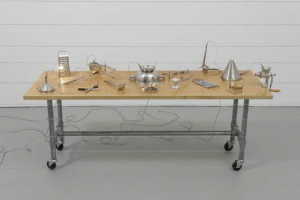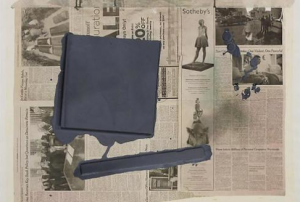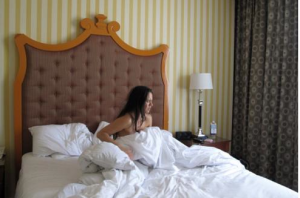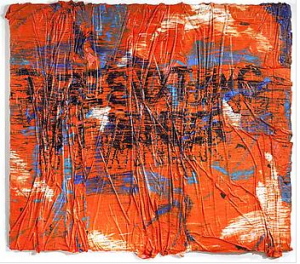
Mona Hatoum’s 1999 sculpture Home (featuring kitchen implements with wires running out of them, accompanied by the sound of pulsating current) inspired this unsettling exhibition plumbing the darker side of the places in which we live. High on anxiety but regrettably low on risk factor, this hit parade of big-name artists still affords the pleasure of reconnecting with iconic artworks about painful circumstances.
Family relations simmer in the show’s best pieces. Louise Bourgeois’s claustrophobic house teeming with phallic/breast/fungal forms and Rachel Whiteread’s black urethane mattress creased by a labial fold conjure a dread matched by a Luc Tuymans painting of place settings that foretells the drama of a family gathering.
Violence spills over in Gregor Schneider’s photos of a strung-up sex doll and in Mamma Andersson’s painting of a disordered bedroom with ominously bloodred furniture. But the most disturbing pieces hint at souls lost to the chaos (Jeff Wall’s photo of a disheveled character standing by the door of his decrepit domicile) or obsessive order (a Thomas Ruff living-room scene) of their lives.
Even a cheery painting of a beach house by Maureen Gallace turns suspiciously, unbelievably idealized in this context, while a whimsical paintbrush by Michael Brown, its handle crafted from melted Neil Young records, seems primed for a cover-up. Viewed from the right angle, David Altmejd’s plaster sculpture of a fantastical lair with dangling staircases turns out to be the head of some deranged giant. Such twists add intrigue to this domestic thriller of a group show.


